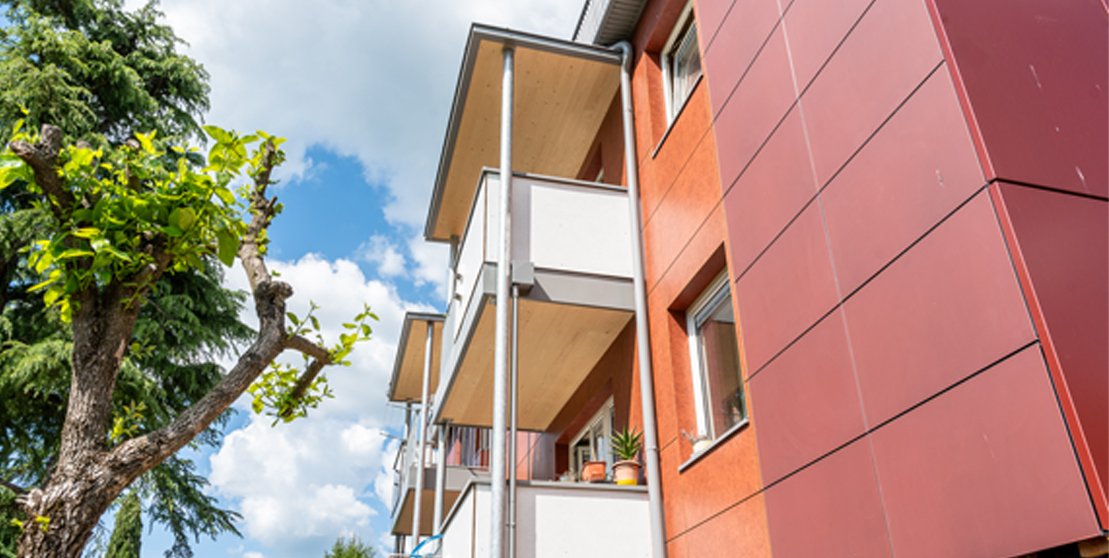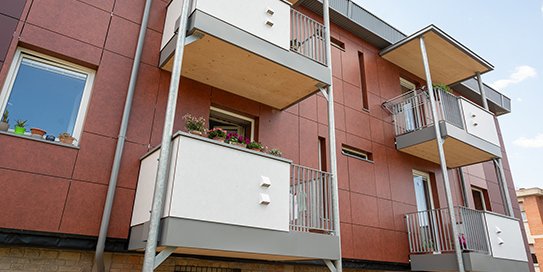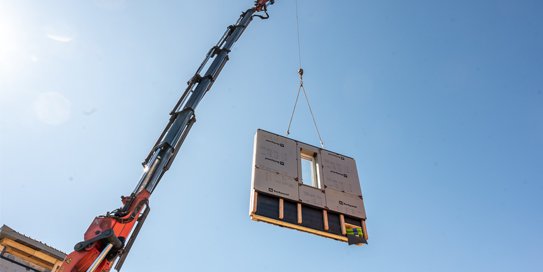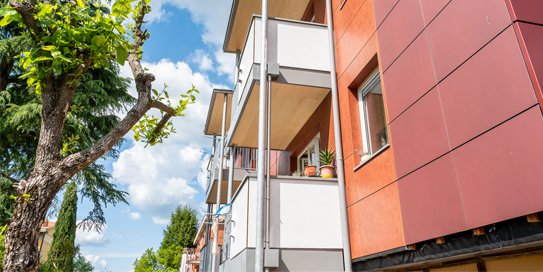Why industrialised deep renovation is good for the planet
The benefits of industrialised deep renovation extend beyond individuals: they impact the environment and society as a whole.
By shifting a large portion of the construction process to factories, IDR promotes several eco-friendly practices and lower greenhouse gas emissions.

Contribution to climate neutrality

The European Union has set the target to achieve climate neutrality by 2050, and IDR plays a crucial role due to the faster renovation rates that can be reached. This acceleration is essential given the current slow pace of deep renovations in Europe.
Reduced waste

Factory production allows for greater precision and control over material usage, leading to less waste generation compared to traditional on-site construction.


Sustainable materials

Lightweight technologies like wood or metal in prefabricated solutions can be more environmentally friendly than traditional construction materials.
End-of-Life

Components produced through DfMA (Design for Manufacture and Assembly) are easier to dismantle and reuse or recycle at the end of their life cycle.


Job creation

The shift to industrialised construction methods will require a skilled workforce, leading to new job opportunities in manufacturing, logistics, design, and on-site assembly.
More comfortable houses

Renovated buildings provide healthier and more comfortable living environments, positively impacting the well-being of residents.
See how retrofitting buildings with prefabricated components works.


Industrialised retrofitting in Europe

Buildings, which consume 40 percent of our energy and emit 36 percent of GHG emissions, play a critical role in the energy transition in Europe. Choosing industrialised deep renovation means making buildings more energy efficient, and thus gaining significant energy savings and reducing greenhouse gas emissions.
The European Union is committed to achieve climate neutrality by 2050, with ambitious targets for reducing greenhouse gas emissions and increasing energy efficiency in buildings. Industrialised deep renovation plays a key role in meeting these goals and complying with new regulations.
The recast Energy Performance of Buildings Directive (EPBD) aims to completely decarbonize EU buildings by 2050. New buildings must be zero emissions by 2030, while public buildings must be zero-emission by 2028. A binding target is that 55 % of the energy reduction is achieved by renovating the worst performing buildings. On minimum energy performance requirements, the law envisages that Member States renovate 16 % of the worst performing non-residential buildings by 2030 and 26 % by 2033.
The Energy Efficiency Directive (EED) also states that increasing energy efficiency in buildings is a driving principle of European policy choices, and sets a target for the global rate of energy efficiency improvements: from 2% to over 4% by 2030. Lastly, the EU's Renovation Wave strategy aims to double the annual energy renovation rate of buildings.
This means that the rate of energy renovations must increase quickly, and IDR is crucial to meet these goals, as this approach makes renovations faster, more efficient, and more appealing to building owners.





